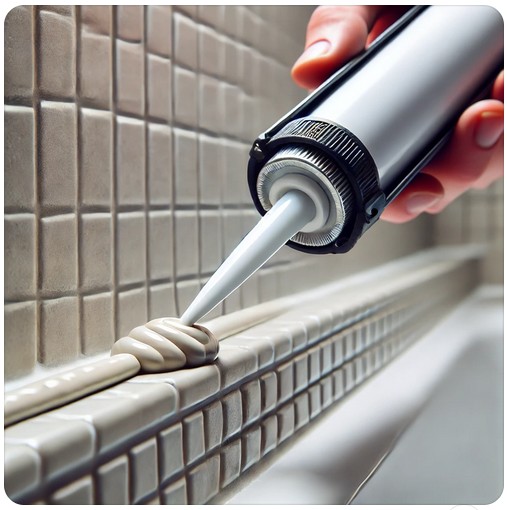Massachusetts Home Inspections YOUR INVESTMENT IS MY CONCERN

Caulking

Caulking is commonly used in areas like the kitchen, bathrooms, and laundry room, particularly around the connections between the toilet and floor, the bathtub floor and wall, the shower floor and wall, and the sink backsplash and countertops. Over time, deteriorated or cracked caulking can allow moisture to seep into structural framing, potentially leading to water damage (such as rot) or fostering mold growth. Since it's difficult to determine how long the caulking has been compromised, moisture may have already infiltrated these areas and caused hidden damage. Such issues can only be fully assessed through remodeling, renovation, or destructive testing.
Before repairing deteriorated caulking, it is essential to inspect the substructure for any signs of structural damage or deterioration. While re-caulking is generally a routine maintenance task and not typically a cause for concern, today’s increased focus on mold disclosures and claims warrants careful consideration. Deteriorated caulking may indicate that moisture has penetrated the structural framing, potentially causing damage or promoting mold growth.
Remodeling or removing sections of the shower, bathtub, or other bathroom fixtures could expose hidden moisture issues or structural damage that were not visible during the inspection. Although I make every effort to evaluate the subflooring under accessible areas such as kitchens and bathrooms, concealed defects in finished basements are beyond the scope of a standard home inspection. Therefore, if you proceed with tile, bathtub, basin, or toilet removal, be prepared for the possibility of uncovering wood damage resulting from past moisture exposure.
How to properly apply caulk around a bathtub
Here is what my clients have to say about my home inspection services:
Press F5 (on your keyboard) for additional testimonials
Dave,
I want to thank you for doing my home inspection. I appreciated your extremely detailed documentation and will certainly use you for any other home inspection needs if i ever have them.
Aaron














